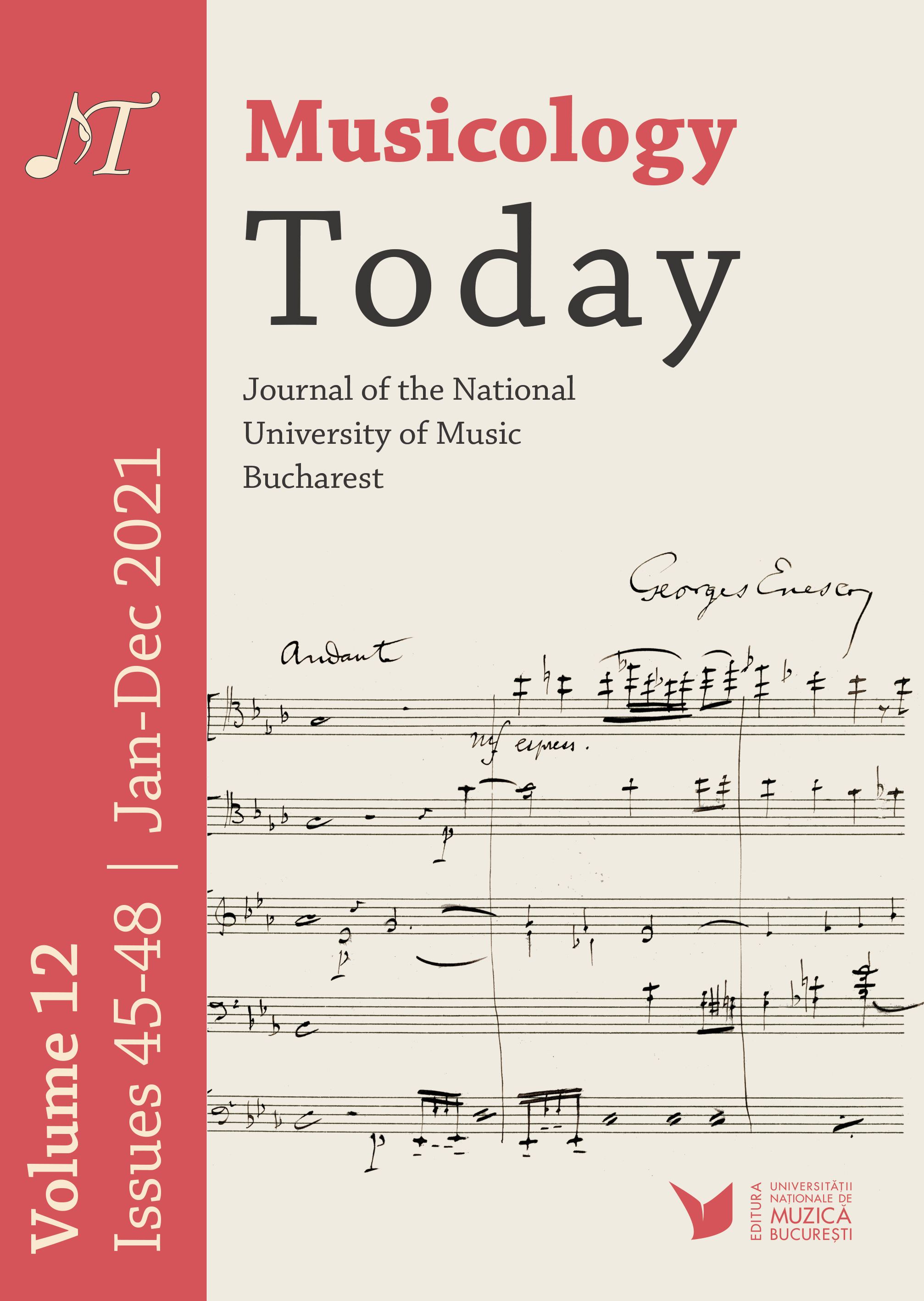“What Is Romanian and What Is Not Romanian?” Enescu's Answers
“What Is Romanian and What Is Not Romanian?” Enescu's Answers
Author(s): Vlad VăideanContributor(s): Ana Lica (Translator)
Subject(s): Customs / Folklore, Music, Cultural Anthropology / Ethnology
Published by: Editura Universității Naționale de Muzică din București
Keywords: național specificity; gypsy lăutari; doina;
Summary/Abstract: In a controversial interview in 1912, George Enescu – already the author of the emblems of sonorous “Romanianness”, the Romanian Poem and the Romanian Rhapsodies – disarmed with the naive sincerity with which he admitted his inability to distinguish, in all the myriad foreign influences that he himself identified as predominant in many areas of traditional Romanian music, the element of “specifically national” authenticity. “What is Romanian and what is not Romanian? It’s so hard for me to say...” – such a nebulous positioning, precisely from one already elevated to the rank of national composer, caused a stir at the time. It was, however, only the first of a long series of interviews in which Enescu was questioned on the same burning issue; the answers he gave over the years eventually came to convey some favourite terms, considered defining of Romanian sensibility: “sadness even in joy”, “this uncertain but deeply moving longing”, “that inexpressible nostalgia”, “the weeping string”, “a strange melancholy”. He has also attempted some explications of the concrete ways in which this ineffable yearning is reflected in Romanian traditional music. In fact, by expressing his extremely general and subjective opinions about Romanian traditional music, Enescu shed an additional and decisive light on his own music. The enescian exegesis has repeatedly reiterated the centrality of the ethos of dor in George Enescu’s Romanian works, i.e. the Romanian version of that affective binomial – melancholy and nostalgia – which has been embodied in versions that are just as “specifically national” and untranslatable in the self-consciousness of any other nation (Sehnsucht and Heimweh in the German version, spleen and maladie du pays in French, añoranza in Spanish, saudade in Portuguese, etc.). The present paper aims to briefly revisit the more or less clichéd ways in which Enescu’s creation has been linked to this ethos.
Journal: Musicology Today: Journal of the National University of Music Bucharest
- Issue Year: 12/2021
- Issue No: 48
- Page Range: 237-254
- Page Count: 19
- Language: English

